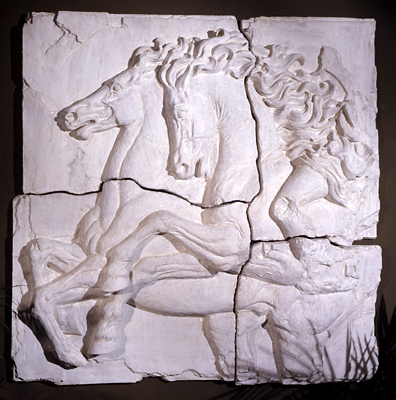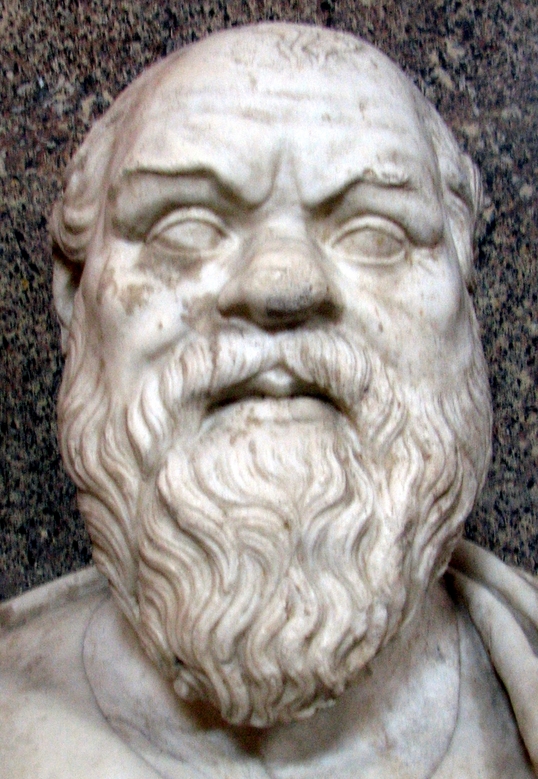
What is Classical Horsemanship?
“What is a teacher? I'll tell you: it isn't someone who teaches something, but someone who inspires the student to give of her best in order to discover what she already knows.”
― Paulo Coelho, The Witch of Portobello
The Athenian philosopher Socrates (469–399 B.C.E.), despite having written nothing, is considered one of the handful of philosophers who forever changed how philosophy itself was to be conceived. He was impressive, so impressive that many others were moved to write about him. Our three primary sources of information about Socrates and his methods and views are Aristophanes, Xenophon, and Plato. Xenophon, well recognized by horsemen and women for his work On Horsemanship, has been called the father of dressage and the first known horse whisperer. While On Horsemanship continues to be a valuable source of reference for any would-be horseman, what is even more intriguing (at least, to me) is the thought process which Xenophon employed to develop the work. Socrates undoubtedly left his mark on the young man, as many of the works Xenophon produced were dialogues modeled in the Socratic Method.
― Paulo Coelho, The Witch of Portobello
The Athenian philosopher Socrates (469–399 B.C.E.), despite having written nothing, is considered one of the handful of philosophers who forever changed how philosophy itself was to be conceived. He was impressive, so impressive that many others were moved to write about him. Our three primary sources of information about Socrates and his methods and views are Aristophanes, Xenophon, and Plato. Xenophon, well recognized by horsemen and women for his work On Horsemanship, has been called the father of dressage and the first known horse whisperer. While On Horsemanship continues to be a valuable source of reference for any would-be horseman, what is even more intriguing (at least, to me) is the thought process which Xenophon employed to develop the work. Socrates undoubtedly left his mark on the young man, as many of the works Xenophon produced were dialogues modeled in the Socratic Method.

Socratic Method is a pedagogical technique employed by Socrates in which the teacher does not give information directly but instead asks a series of questions, with the result that the student comes either to the desired knowledge by answering the questions or to a deeper awareness of the limits of knowledge. The Socratic Method is a negative method of hypothesis elimination, in that better hypotheses are found by steadily identifying and eliminating those that lead to contradictions. As applied to horsemanship, a rider or trainer can utilize the Socratic Method with a horse, and this is the underlying premise of Xenophon’s On Horsemanship.
If we consider the horse as our student, we can help the horse to explore and discover a range of subjects of interest to him, from balance, collection and speed (physical components) to anxiety, fears, calm and peace (emotional components). When we use aids as a form of communication which does not make demands upon the horse, but instead asks questions of the horse, we are appealing to his intellect. If we ask, instead of demand, we give the horse the opportunity to explore various answers, and during the course of his exploration, he will find some responses work better, are more comfortable, more efficient, than others. He uses the process of elimination to find an agreeable solution. He will be happy to utilize the fruits of his discovery, to make himself a better or faster mover; to calm himself, when he becomes frightened; to offer the best of what he is able to give to his rider. Asking questions, requests rather than demands, allows the horse to explore a range of possible responses. The horse is not only allowed, but encouraged, to engage in the discovery process, and this has a great deal of importance to the horse. A horse who understands his role in the process becomes attentive, engaged, interested, and committed to the process. There is no better way to develop an obedient horse then by allowing the horse to become invested in the process. In the corporate world, it’s referred to as “employee buy-in”. It’s relevance to us is that we can inspire a horse to passionately bring his best to the table, each and every time we ask. Keep in mind, his “best” may be mediocre, or even poor, at the beginning of the process. But with patient persistence, continued questioning and exploration, the horse will find better and better ways of responding.
The rhetorical process has played a central role in western tradition for centuries, and this art of discourse, “question and answer” communication, is as relevant to appealing to the intellect of the horse as it is to appealing to the intellect of people. The five canons of rhetoric, which trace the traditional tasks in designing a persuasive speech, were first codified in classical Rome: invention, arrangement, style, memory, and delivery. Briefly, the rhetoric process outlines the process of exploration and discovery; ordering that discovery, and how it relates to other “known” ideas; styling the discovery into clear, comprehensible form (understanding the discovery, and its potential use); remembering the discovery to recall it for future use; and finally, using that discovery, delivering the “action” result of the process. Only this last canon has a physical manifestation; it’s important to remember the initial four phases of the process are internal, and in the case of the horse (who is woefully incompetent in the art of vocal rhetoric) we often do not notice the result of this process until it’s reached its conclusion. Developing our powers of observation aids us in evaluating the process before the final stage, giving us the ability to affect and shape the direction of the process, and redirect the process if need be, before we head too far down the road of undesirable actions.
Classical: 1. of, pertaining to, or characteristic of Greek and Roman antiquity: classical literature; classical languages. 2.conforming to ancient Greek and Roman models in literature or art, or to later systems modeled upon them.
The educated equestrian understands the importance of understanding the principles of the work, before the work is started. By defining the principle objectives and rules of the process (and sometimes, what they are not), the rider or trainer can critically evaluate whether the choices they make adhere to, or violate, the principles and objectives they have defined. At first glance, this may seem restrictive. In reality, what this does is allow the trainer endless opportunities to invent and explore, and expand methodology to better suit the needs of the individual horse in their care. Personally, I choose to apply the classical art of rhetoric, the Socratic Method, to training horses. This understanding of “classical” will guide the reader in his or her understanding of the articles to come.
The rhetorical process has played a central role in western tradition for centuries, and this art of discourse, “question and answer” communication, is as relevant to appealing to the intellect of the horse as it is to appealing to the intellect of people. The five canons of rhetoric, which trace the traditional tasks in designing a persuasive speech, were first codified in classical Rome: invention, arrangement, style, memory, and delivery. Briefly, the rhetoric process outlines the process of exploration and discovery; ordering that discovery, and how it relates to other “known” ideas; styling the discovery into clear, comprehensible form (understanding the discovery, and its potential use); remembering the discovery to recall it for future use; and finally, using that discovery, delivering the “action” result of the process. Only this last canon has a physical manifestation; it’s important to remember the initial four phases of the process are internal, and in the case of the horse (who is woefully incompetent in the art of vocal rhetoric) we often do not notice the result of this process until it’s reached its conclusion. Developing our powers of observation aids us in evaluating the process before the final stage, giving us the ability to affect and shape the direction of the process, and redirect the process if need be, before we head too far down the road of undesirable actions.
Classical: 1. of, pertaining to, or characteristic of Greek and Roman antiquity: classical literature; classical languages. 2.conforming to ancient Greek and Roman models in literature or art, or to later systems modeled upon them.
The educated equestrian understands the importance of understanding the principles of the work, before the work is started. By defining the principle objectives and rules of the process (and sometimes, what they are not), the rider or trainer can critically evaluate whether the choices they make adhere to, or violate, the principles and objectives they have defined. At first glance, this may seem restrictive. In reality, what this does is allow the trainer endless opportunities to invent and explore, and expand methodology to better suit the needs of the individual horse in their care. Personally, I choose to apply the classical art of rhetoric, the Socratic Method, to training horses. This understanding of “classical” will guide the reader in his or her understanding of the articles to come.
1.6.12 TME
return to
Educated Equestrian
return to
Educated Equestrian